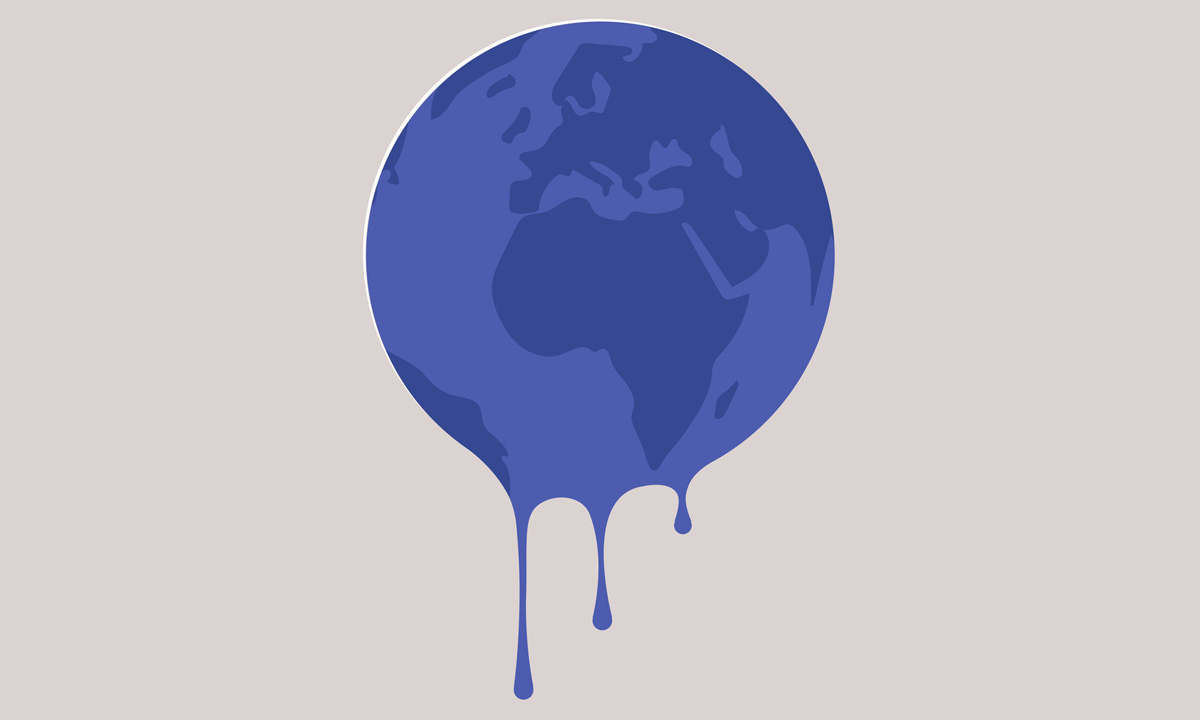This Course Uses ‘Climate Fiction’ to Teach About the Perils of a Warming Planet
Opinion: Storytelling can be an effective way to impart lessons in science.

Get stories like this delivered straight to your inbox. Sign up for The 74 Newsletter
Uncommon Courses is an occasional series from The Conversation U.S. highlighting unconventional approaches to teaching.
Title of Course:
“Climate Change Literature”
What prompted the idea for the course?
After reading many fiction books that featured themes of climate change, I felt compelled to create a course that would allow students to do the same. The idea was to have students learn about our planetary crisis by exploring how it’s portrayed in literature.
At John Carroll University, students are required to take paired courses that are tethered together from two different departments. I approached a colleague who teaches a biology course about climate science to see if he wanted to link his course to mine. Students must co-enroll in both of our courses during the same semester. The combined courses give students both a scientific and literary view of climate change. In my colleague’s class, students learn about carbon dioxide emissions and the like. Then, in my class, they study how fiction writers and poets incorporate concerns about the effects of rising temperatures into their work.
What materials does the course feature?
The major work of fiction we read is Barbara Kingsolver’s novel “Flight Behavior,” about a low-income family in Appalachia. Millions of monarch butterflies become confused by warming temperatures and accidentally overwinter on the family farm, setting off much conflict. We also read lots of poetry and short fiction with themes of the impacts of planetary heating. We read some fiction by Kim Stanley Robinson, Paolo Bacigalupi, Tommy Orange, Olivia Clare, Jess Walter and more. Poets include Matthew Olzmann, Nickole Brown, Ross Gay, Dante Di Stefano and Craig Santos Perez.
What does the course explore?
By reading climate fiction and poetry, students learn how overreliance on fossil fuels overlaps with issues of economic injustice, racial disparities in climate impacts and climate migration. We explore narrative voice, structure, imagery, plot, dialogue, style and other textual concerns in creative works influenced by living in the Anthropocene – or the period, according to some scientists, when human activity began to significantly affect the planet’s climate and ecosystems. That period is thought by some climate change experts to have begun in the 1950s. Through classroom discussion, we share the collective experience of engaging with characters who navigate a threatened world.
To integrate the biology and English classes, the students’ final projects are pitches for a Hollywood movie that portrays a changed world due to planetary heating while also getting the science right. The assignment is harder than it sounds: Students must understand the harmful results of carbon emissions and craft a compelling story.
Why is this course relevant now?
Climate change is an existential crisis affecting us all right now. Many students do not study Earth science in high school; their first, and possibly only, exposure to evidence-based climate change happens in college. Authors address consequences such as warming temperatures, ocean acidification, desertification and sea-level rise. Thus, literature has become an essential tool to construct meaning in an age of climate disruption.
What’s a critical lesson from the course?
Literature helps us feel the immediacy of what’s at stake in a climate-changed world. The storytelling in fiction and poetry teaches us much that scientific and policy reports, charts, graphs and forecasts cannot. While data can predict rising sea levels, for example, a short story such as Tommy Orange’s “New Jesus” shows us how it feels to live in a submerged town where residents’ feet are always wet. Climate researchers predict the increasing desertification of the American Southwest. Through Paolo Bacigalupi’s short story “The Tamarisk Hunter,” readers experience what it looks like to see towns abandoned due to the lack of water, and golf courses where sand traps no longer exist because the entire course has turned to sand.
What will the course prepare students to do?
Analyzing fiction and poetry sharpens students’ critical interpretive skills and prepares them to think originally and creatively as they enter a workforce altered and threatened by climate change. For example, pre-health majors will see the impacts of climate change on the human body. Business majors will need to know how to operate when extreme weather and disrupted supply chains affect the bottom line.
Our two paired courses combine science and literature to equip students with expansive ways of asking questions about their role in the world.![]()
This article is republished from The Conversation under a Creative Commons license. Read the original article.
![]()
Get stories like these delivered straight to your inbox. Sign up for The 74 Newsletter

;)